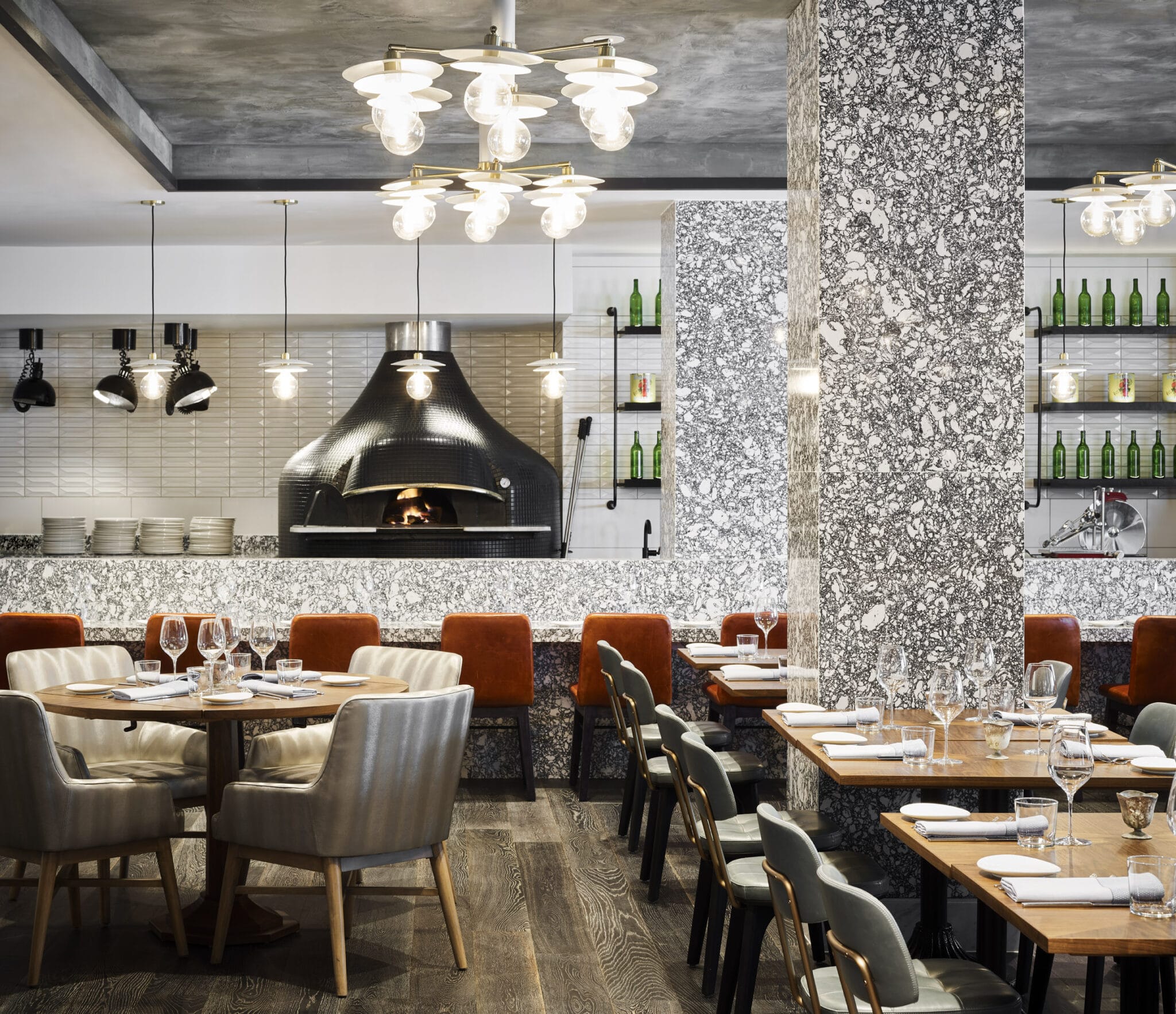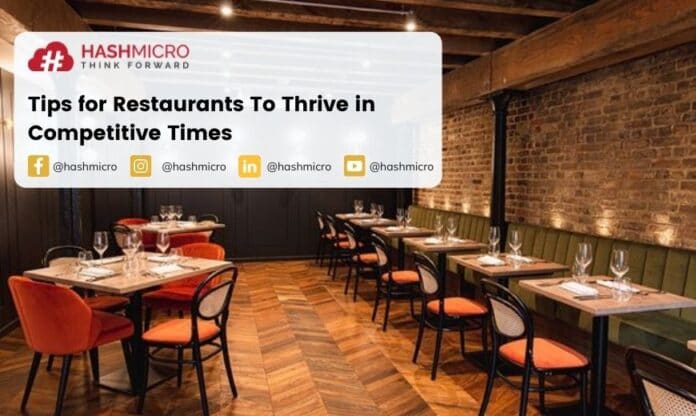Restaurants have always been an important part of a flourishing society’s business, social, intellectual, and artistic life. Restaurants are where big life milestones, both personal and professional, are commemorated.
Why is it that restaurants are more relevant now than they have ever been before? Restaurants are playing an increasingly crucial role in defining our overall economy as well as the structure and makeup of our cities in the twenty-first century. Moreover, restaurants are more sophisticated with a renewal of advanced software for F&B Business.
Restaurants operate in an analog environment, although we live in a digital society. The digital revolution has caused so much in the industry to manage all branches in one platform POS system. Technological progress has been modest.
Even the most revolutionary technologies have had minimal impact on restaurant standard operating procedures or the visitor experience, especially those who are implementing the best POS Restaurant Software.
For that to happen, those restaurants must need an integrated restaurant system to automate all of the business processes. You also probably need a consultation of your company’s needs with business experts, and you can get it just by downloading this pricing scheme calculation software.
Table of Content:
Table of Content
What Is a Restaurant?
A restaurant is a public space located in public to sell food and beverages to any person or group of people. However, we are uncertain of the correct definition or meaning of the term “restaurant.” On a commercial basis, it provides food and beverages.
Everyone is welcome to come here for refreshments, food, and beverages. Everyone is also welcome to eat and drink for a fee. Restaurants provide food and beverage services to meet the needs of their customers. You can improve your serving efficiency and eliminate missed and overdue orders with a kitchen display integration system in this digitalized era.

The customer database and its calculation can be automated easily by an advanced POS restaurant system. Guests rest in restaurants and pay rent for refreshments, food, and beverages. The word “restaurant” is derived from the words “rest and rent.” “Rest & Rent” are two words that combine to form the word restaurant.
Restaurants are where big life milestones, both personal and professional, are commemorated. Around a table in the secure and controlled environment of a restaurant, strangers become friends. Occasionally, strangers become lovers across a restaurant table. Restaurants are more essential now than they have ever been.
How To Manage a Restaurant?
Managing a restaurant menu is similar to keeping an eye on the gears of a complex machine. You’re not only dealing with the standard management issues about staff and customers, but you’re also dealing with food service and all of the baggage that is involved.
This can be intimidating for a new restaurant manager. It’s a storm of psychological and artistic demands coming at you at rapid speed. These restaurant management tips will help you improve your leadership abilities:
1. Be dependable
In a restaurant, no two days are alike. Like no other business, new crises emerge at the drop of a bag in a restaurant. Things change quickly, and the worst thing a manager can do in such a situation is inconsistent in his approach to responding to and resolving difficulties.
What aspects of your life do you need to be consistent with? You need to manage how you communicate, how you keep your rules up to date and what your expectations are. Your employees need to know that you will remain consistent even if there is a rush at the door and a tiny circus in the kitchen. Because of your uniformity, they are able to withstand high-stress loads without cracking.
2. Manage Proactively
In the restaurant business, things come at you fast. You need to be proactive and stay ahead of the curve instead of being reactive. This means that you look and work in the future, not in the current moment, for managing decisions such as:
- Staffing needs
- Menu changes and updates
- Marketing campaigns
- Inventory
- Spotting consumer trends
- Updating technology
If you’re not proactive, the restaurant will manage you rather than the other way around. For that to happen, you can monitor stock transfers and optimize stock management across multiple locations with the fully-featured Inventory Software.
3. Do the work yourself to learn the procedure
As a manager, the more real-world business experience you have, the better you will be at problem-solving when anything goes wrong.
Be a manager who isn’t afraid to get his or her hands dirty, who understands how the kitchen works, what the cooks are up to, and what the servers are going through. Talk to your employees about their jobs and why they use the techniques they do. You’ll acquire your employees’ respect (and knowledge), and you’ll be in a better position to make decisions that influence them and the customers they serve.
4. Keep your eye on customer satisfaction
Customer expectations are challenging to manage in any business, but restaurants are at the top of the list. You’re dealing with a variety of concerns, including culinary preferences, dietary restrictions, restaurant traffic, unhappy clients, last-minute reservations, and people who arrive five minutes before the restaurant closes.
When a customer issue arises, the final goal for every decision you make is customer satisfaction. How you achieve that satisfaction may differ, but the final result is always the same. It’s no joke: having a rudimentary understanding of psychology would be beneficial. One word of caution: don’t sacrifice your employees to achieve customer pleasure. Protect your employees from enraged customers. Remember that you don’t want to lose any employees.
5. Improve the customer experience
According to the National Restaurant Association, 56 percent of adults polled said they’d rather spend money on an experience than go grocery shopping. You may believe you’re only responsible for food preparation and delivery, but you’re also responsible for the client experience.
It’s easy to get caught up in the obvious issues of good cuisine and efficiency, but you’ll miss the larger picture if you don’t care about your diners’ overall experience. Ambiance, cleanliness (particularly in restrooms! ), courteous personnel, reasonable rates, distinctive food, and even no-fuss no-wait seating are all factors to consider when managing client experience.
6. Take word-of-mouth seriously
Friends’ recommendations are the most common approach for people to choose a restaurant (78 percent ). Social media is the second most popular option. These are essentially the same in that they stem from what others say about you rather than your message (which you control).
Online reviews are important. It’s important to create a distinct and memorable experience that encourages visitors to rave about your restaurant. Having a social media presence is important (as long as you can manage it well). It’s important to keep track of what’s being said about your restaurant on social media. Also, keep in mind that word-of-mouth can work both ways. It might be either positive or negative. You can capture more targeted leads and optimize your marketing efforts with Singapore’s best Marketing Automation System.
7. Invest in advertising
A restaurant cannot survive just on word of mouth. You’ll still need to promote yourself. You’ll need signage, newspaper ads, and web ads—advertising is especially vital in a competitive area or if you’re opening a new restaurant. The key to success as a manager is to set a budget and keep to it. Sure, it’s self-evident, but a sensible advertising budget is predicated on obtaining data that is specific to your restaurant’s demands. You must be gathering the relevant information. This includes the following:
- Demographics (Who eats at your restaurant? Advertise where they are. Social media ads can work well and have ample audience targeting capabilities).
- Trends
- Sales (Including peak times and seasons)
- Food trend
This type of information is useful for many restaurant decisions, but it’s especially important if you want to avoid wasting money on ineffective promotion.
How to Market a Restaurant?
There is no single “optimal” strategy to market a restaurant because it depends on its category, target audience, location, and other factors, but these are the basic steps that any food-friendly institution should take.
To put it another way, restaurant competition is strong, therefore you’ll need a bullet-proof restaurant marketing strategy. In this all-in-one restaurant marketing guide, we will give you all of the strategic inspiration you’ll need to attract, satisfy, and retain consumers.
1. Develop the identity of your restaurant’s brand
Your brand identity is more than just your brand colors. It expresses the personality of your company, the tone of your material, and the feelings you want to evoke in your customers. It’s not enough to be “happy.” So, first and foremost, establish your target demographic, then segment that population into unique buyer personas based on their interests and lifestyles. Publish a consistent theme and feel that works for all of your personas, and then use it in every piece of material you create and every action you take.
2. Create a website
This is unavoidable. You must have a homepage, an about us page, a menu, and a contact page at the very least, to accomplish all of that, you will need to create a website. However, you should have a reviews page, photo gallery, blog, and even a FAQ page on your website. We’ll go into optimizing your site in further detail later, but the main thing to remember right now is that your website is the go-to for current and new diners, and it needs to appear professional—first impressions count!
3. Determine the mission you are going to strive for
This should be a clear statement that expresses the objective of your firm and goes along with your brand identity. Is it to lower the cost of healthy food? To promote family unity? Or is it possible to promote sustainability? What you deliver, where/to whom you provide it, why you do it, and how you do it should all be stated in your mission statement.
4. Set up the socials you want
Your social profiles are next on the list of things to do to improve your internet visibility. Facebook and Instagram are the most popular social media sites for restaurants, but TikTok, Twitter, YouTube, and even LinkedIn have a role for many businesses.
Tiktok is more popular nowadays, Consider engaging with your audience through creative content and interacting with trending topics to boost your presence and get more Tiktok likes. To get your profiles and strategy up and running, use our entire guide to social media marketing.
5. List your restaurant on the restaurant app
Dining and restaurant apps are among the most effective free restaurant marketing strategies, as what is found on one implies being found by customers who are looking for something specific. Because dining apps allow users to filter results very precisely, the key to success is to provide as many details as possible, such as:
- Category
- Address and phone
- Store hours
- Menu
- Price range
- Photos
- Attributes (wifi, outdoor seating, parking, special dates, etc)
- Website
Using a restaurant app builder to customize your listing can make your restaurant stand out even more to potential customers. A perfectly tailored design, combined with comprehensive information, can be an excellent way to boost your competitiveness in the digital platform.
Software For Restaurants
Moving from the ‘pen and paper’ technique of restaurant booking to a restaurant reservation system can make a huge difference for restaurants that take reservations. Restaurant reservation software not only makes your day-to-day operations a lot smoother, but it also gives your customers a better experience. Rather than answering phones and manually entering information, guests can use a website interface, mobile app, or web widget to enter their own information.
HashMicro POS Restaurant is one of the best POS systems for the F&B business. As a multi-function POS Restaurant Software to process transactions, table management, and monitor the order status from the kitchen. You can also create promotion programs easily and manage all branches on one platform. Our system uses an easy-to-use interface to help you process customers’ transactions from all branches. Moreover, its good restaurant reservation setup will also feature an intuitive table management system to make sure your customers are satisfied with the service.
Conclusion
POS systems are now one of the most powerful types of restaurant management software that a restaurant may have. Modern POS systems combine the functions of a computer and a cash register, allowing them to accept credit card payments, print receipts, show information on a user-friendly screen, and act as a service station.
For enhanced portability, historically large tabletop POS systems are being replaced with tablets such as iPads thanks to technological developments. We can provide E-Menu that customers self-service ordering and a more enjoyable dine-in experience in your restaurant with our best Restaurant POS System.
It is designed specifically to help users manage their food service establishment. Some platforms have functionality related to customer interactions, such as that found in a point of sale (POS) system. However, restaurant management software more often focuses on behind-the-scenes processes such as restaurant employee scheduling, inventory management, and accounting.
Therefore, our restaurant POS system is here to simplify your transaction process, and table management, and monitor the order status from the kitchen. You can also get a free software demo just by clicking here, check it out now!



































